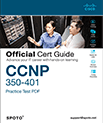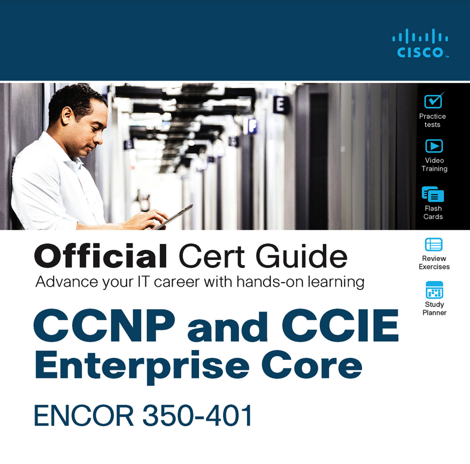Exclusive Courses | ENCOR 350-401 -BGP
Border Gateway Protocol (BGP) for Cisco's ENCOR (350-401) exam
- Experienced instructors with industry expertise
- Access to official guides and materials
- Covers all exam topics thoroughly
- Flexible study at your own pace
- Support for exam service
- Anytime access to study resources
What you'll learn
Training Course Outline
ENCOR 350-401 -BGP
Training Options
Self Paced Learning
- Lifelong access to high-quality content
- Curated by industry experts
- Customized learning progress
- 24/7 learner assistance and support
- Follow the latest technology trends
Exam Dump
- 100% Real Exam Practice Tests
- 100% Verified Exam Questions & Answers
- 100% Guarantee Passing Rate
- Average 7 Days to Practice & Pass
Description
Learn everything you need to know about Border Gateway Protocol (BGP) for Cisco's ENCOR (350-401) exam, including how neighborships are formed, how path selection works, and how to perform a basic eBGP configuration.
Pre-requisites
Although there is no prerequisite for taking the ENCOR exam, it is recommended that you have a foundational understanding of basic networking concepts Network simulator, emulator, or physical equipment for lab practice (optional)

CCNP 350-401 Practice Test PDF
SPOTO Free CCNP 350-401 Practice Test PDF. 100% Valid CCNA Exam Questions and Answers from Real Exam.

Official Cert Guide CCNP and CCIE Enterprise 350-401
Advance your career with hands-on learning
CCNP ENCOR Exam & Certification
What is the BGP in CCNP ENCOR?
BGP (Border Gateway Protocol) in CCNP ENCOR is a critical path-vector routing protocol designed for interconnecting Autonomous Systems (AS) in large-scale networks. As the backbone of internet routing, BGP enables enterprises and ISPs to exchange routing information dynamically while enforcing customizable policies. In ENCOR, BGP is emphasized for its role in multi-homed networks, traffic engineering, and ensuring network resilience through features like route reflectors and confederations. Mastery of BGP is essential for configuring scalable, secure, and policy-driven networks, aligning with Cisco's focus on real-world enterprise and service provider solutions.
What are the BGP fundamentals?
BGP fundamentals include AS (Autonomous System) concepts, EBGP/IBGP peer relationships, and TCP-based communication (port 179). Key principles involve path attributes like AS_PATH, LOCAL_PREF, and MED to influence route selection. BGP routers exchange routing tables initially, then use incremental updates for efficiency. ENCOR also covers neighbor states (Idle, Connect, Established) and loop prevention via AS_PATH checks. Understanding these fundamentals ensures proper configuration of policies, route redistribution, and troubleshooting in complex topologies.
How to operate, configure, and utilize BGP path attributes?
BGP operation involves establishing neighbor adjacencies using peer commands and verifying sessions with show bgp summary. Configuration steps include defining AS numbers, enabling route advertisement (network command), and setting next-hop-self for IBGP. Path attributes are manipulated for traffic control:
- LOCAL_PREF prioritizes exit paths within an AS.
- AS_PATH prepending deters inbound traffic.
- MED influences inbound path selection for neighboring ASes.
Advanced techniques include route reflectors to reduce full-mesh IBGP requirements and communities for tagging routes.
Key concepts and skills for BGP in enterprise networks
Proficiency in troubleshooting neighbor relationships (e.g., TCP connectivity, AS number mismatches) is vital. Skills include:
- Configuring route policies using prefix lists and route maps.
- Implementing load balancing with multipath and attribute tuning.
- Securing BGP sessions with MD5 authentication.
Understanding BGP table components (e.g., RIB, Adj-RIB-In) and convergence behavior helps optimize network stability. Mastery of these concepts ensures efficient routing in multi-vendor, hybrid cloud environments.
Preparing for BGP on the ENCOR exam
Focus on scenario-based labs covering EBGP/IBGP setup, route redistribution, and path attribute manipulation. Key exam topics include:
- Route selection rules (e.g., highest WEIGHT, LOCAL_PREF).
- Troubleshooting common issues like stuck neighbor states or missing routes.
- BGP policies for traffic engineering and security.
Utilize tools like Cisco's Packet Tracer or eNSP for hands-on practice with route reflectors and confederations. Review whitepapers on AS path filtering and community-based routing to align with Cisco's best practices.